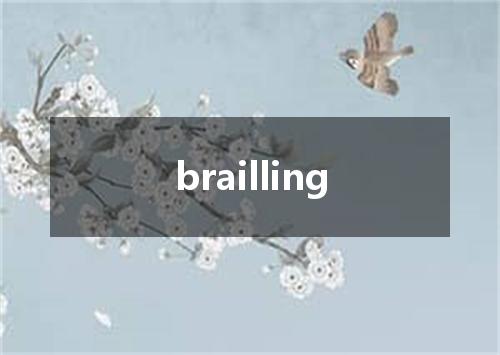brailling

n.(布莱叶)盲文;盲人点字法;【人】布莱叶
v.用盲文书写(或印刷)
变形
过去分词:brailled 第三人称单数:brailles 现在分词:brailling英英释义
braille[ breil ]
n.
French educator who lost his sight at the age of three and who invented a system of writing and printing for sightless people (1809-1852)
同义词:Louis Braille
a point system of writing in which patterns of raised dots represent letters and numerals
v.transcribe in Braille
权威例句
A Cognitive Approach to Brailling Errors.The effects of brailling and physical guidance on the self-efficacy of children who are blind
AccuBraille introduces credit card Brailling
The effect of brailling and physical guidance on the self-efficacy of children who are bIind
Deciphering apparatus
TO READ MID DRIVE THE NIGHT AWAY*
Blind and Visually Handicapped College Students-Part II: Settings and Services.
BrailleEasy: One-handed Braille Keyboard for Smartphones
Frederick Weyerhaeuser and the American West
Tanzania: Researcher Explores Lives of Disabled Women & Girls
1. Onomatopoeia and mimetic words are a striking feature of Japanese vocabulary.
摘要拟声词和拟态词是日语词汇的突出特征.
来自互联网
2. Words like rustle and gargle are illustrations of onomatopoeia.
词像沙沙和漱口有插图的象声词.
来自互联网
3. Chinese and Japanese are representative languages with abundant use of onomatopoeia among them.
汉语和日语是其中较具代表性的有着丰富拟声词的语言.
来自互联网
4. Generally speaking, onomatopoeia have no actual meaning, therefore they cannot be used as a subject.
一般来说, 象声词没有实际意义, 因而不能当主语.
来自互联网
5. The words that function as predicate are adjectives, nouns, numerals and onomatopoeia, in addition to verbs.
除了动词以外,形容词 、 词 、 量词和象声词都可以充当谓语, 这类句子称为非动词谓语句.
来自互联网
[ onomatopoeia 造句 ]
